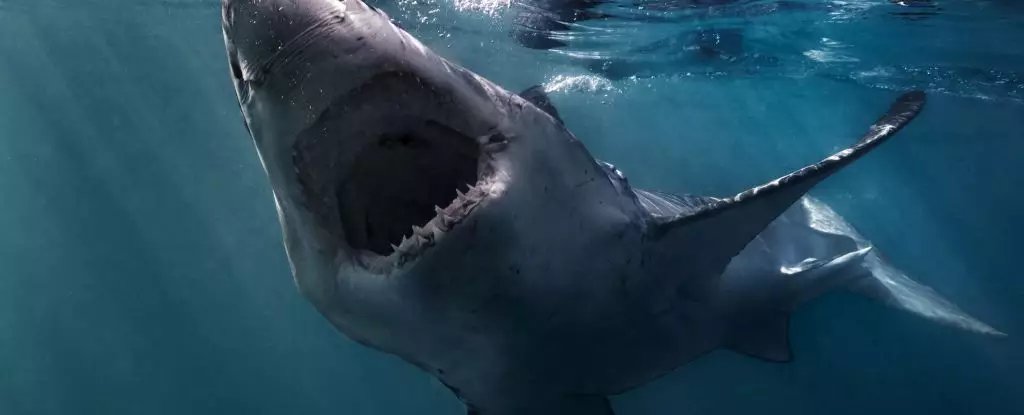In a truly harrowing incident of shark-on-shark crime in the waters of Bermuda, a pregnant porbeagle met her tragic fate after being slain and devoured. Thanks to a satellite tag that the shark had been equipped with, the strange temperature data collected told a chilling story. Marine biologist Brooke Anderson from Arizona State University was shocked when she analyzed the data. Despite trying to come up with alternative explanations for the increase in temperature at depth, all signs pointed to the same conclusion – the pregnant female porbeagle had been eaten by an even larger shark.
Porbeagles are large mackerel sharks that are facing a worrying decline in numbers. These sharks are not only targeted in recreational and commercial fishing but also end up as bycatch. Female porbeagles have a slow reproductive cycle, with their young incubating in eggs inside their mothers and being born live after about eight or nine months. This vulnerability to population decline is exacerbated by threats such as overfishing and predation.
To protect these vulnerable animals, Anderson and her colleagues employed the use of satellite tags to monitor the movements and behavior of porbeagles. The tags used, known as pop-off tags, record valuable information such as temperature, water depth, and location data. The tags detach from the shark after a period of time and float to the surface to transmit the stored data to researchers. In addition to pop-off tags, fin-mounted tags on the shark provide more accurate location data when the fin breaks the water’s surface.
The Chilling Discovery of Shark Predation
The pregnant porbeagle, measuring 2.23 meters, was tagged in October 2020, and researchers began receiving data from the pop-off tag in April 2021. The data showed abnormal behavior from the porbeagle on March 24 when a significant increase in temperature was recorded at similar depth ranges. The likelihood that the porbeagle had been eaten by a predator, such as a white shark or a shortfin mako, was very high. The rise in temperature indicated that the tag had been in the predator’s digestive tract before resurfacing.
While shark predation is not a new phenomenon, the encounter involving the predation of a pregnant porbeagle sheds light on a worrying trend. The loss of multiple sharks in one incident highlights the impact that predation may have on the porbeagle population. Tagging more porbeagles and other sharks could provide valuable insights into migration patterns, frequency of predator encounters, and the overall impact on shark populations. Anderson emphasizes the importance of utilizing advanced satellite tagging technologies to uncover novel behaviors in marine species and gain a better understanding of the challenges they face in the open ocean.
The case of the pregnant porbeagle serves as a reminder of the complex interactions and threats that marine species, such as sharks, face in their natural habitats. By delving deeper into these mysteries and utilizing cutting-edge technologies, researchers can work towards developing effective conservation strategies to protect vulnerable species like the porbeagle from the perils of the ocean.


Leave a Reply